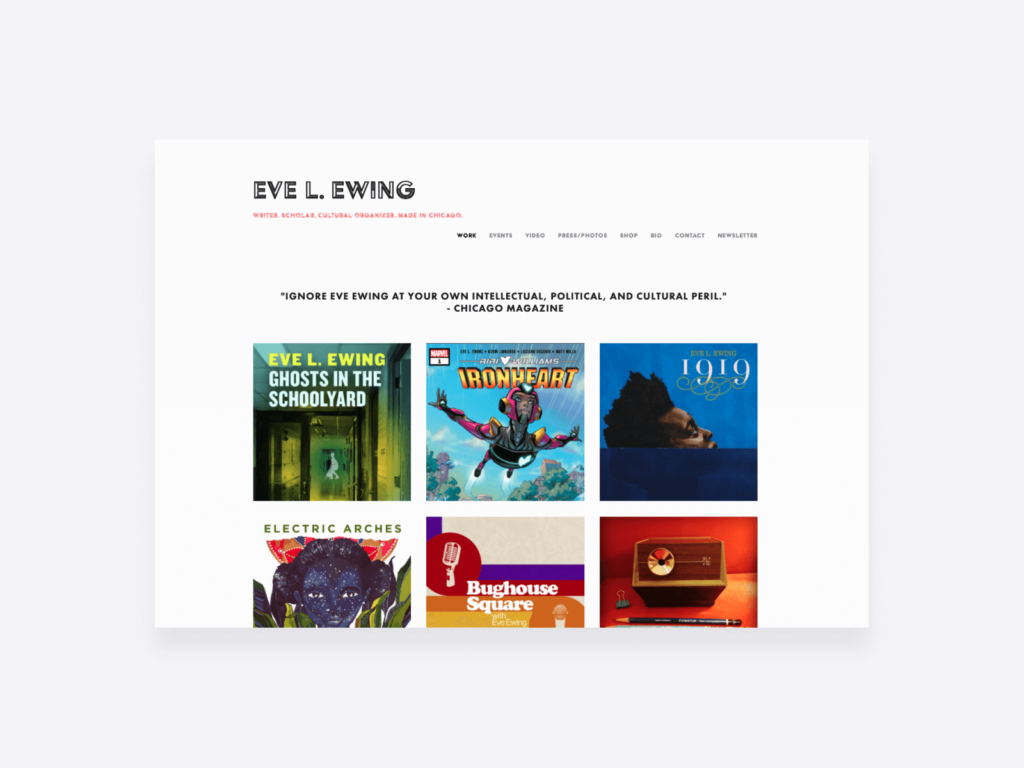How to Become A Freelance Writer & Get Paid Working From Home
You want to get paid for what you love: writing. But on your own terms, breaking out of the corporate world that’s been driving you crazy for years. So that you can be your own boss and never have to deal with long commutes, micromanaging supervisors, or strict office hours again. And although becoming a freelance writer might seem like a big leap of faith at first, if you go into it with a solid plan, it can easily be the best career decision of your life.
In this blog post, we’ll walk you through everything you need to learn to become a freelance writer:
- how to create a killer writing portfolio,
- networking,
- pitching,
- and all the skills you’ll need along the way.
The first step to becoming a freelance writer: polish your writing skills
If you want to be a professional writer, getting paid for what you do, the very first thing you’ll need is confidence in your writing skills. It’s good to be humble and know where you have room to improve —but in order to sell your services and earn a living from writing, your skills will need to be up to par. And you’ll have to believe in them too.
Although you don’t necessarily need formal education and a university degree to be a freelance writer, enrolling in a related university program is worth considering. Depending on what kind of writing you’d like to pursue, English, creative writing, or even advertising majors would be great choices for you.
For those of you who don’t want to commit to a full 4 years back at school, you can find great writing courses online to improve your writing skills. You can learn specialized material in your chosen niche or field, in much less time.
But the most bulletproof way for polishing your writing skills and gaining confidence as a writer is always going to be practice. Just keep writing: make up projects for yourself, ask your network if you can help them out. With practice and feedback, it’s guaranteed that your writing will get better.
Create a convincing freelance writer portfolio
Continuing that train of thought, the number one thing you’ll need to start freelancing is some samples displayed nicely in a writing portfolio.
Whenever you get in touch with a potential client, they’ll ask to see some of your previous work, so they can judge your style and skill level. So you’ll have to prepare a portfolio with amazing writing samples to sweep them off their feet. Getting there is a 3-step process:
- 1. Write and carefully select your samples. As people looking at freelance writer websites don’t have all the time in the world, you’ll have to limit the number of projects you display and select them purposefully. Try to stick to a maximum of 6-8 projects and include a variety that shows your expertise and reflects your specialization.
- 2. Create short case studies. Yes, what visitors will be initially looking for is the finished work itself. But you can save them time and make a bigger impact by presenting them with short case studies before getting to the actual writing piece. It gives them insights into what’s it like to work with you and shows them what they can expect if they decide to hire you.
- 3. Build your portfolio site. You’ll need a place to house all those compelling case studies. This will be your actual portfolio that you can send over when they’re asking to see your work. There are many different approaches to creating a digital portfolio, but the most professional way for freelance writers is to build a website.
Worried about the technical side of building a portfolio website? Choose a website builder like Copyfolio that will make it super quick and simple. Choose a style, add the sections you need and fill it with your copy. It only takes a few clicks to get your site ready to go with Copyfolio.
Establish your online presence as a freelance writer
But your freelance writer website will be more than just a mere vessel for housing your writing projects. It’s your key to establishing your online presence as a professional writer. Together with your public social media profiles, they’re the most important outlets of your personal branding. You’ll have to make sure that each of them clearly communicates:
- The fact that you’re a writer
- Your expertise and specialization
- Your biggest strengths and unique selling points
- Whether you’re available for new projects
- And how people can get in touch with you
Pro tip: whether you’re writing the text for your website, your Instagram bio, or social media captions, think and write like a copywriter. Because at the end of the day, they’re there to sell you and your services —and people expect nothing short of amazing copy when they’re on the page of a professional writer.
Get inspired by these freelance writer portfolio examples
Sometimes seeing how others do it can be the perfect little push you need to get started with building your writing portfolio. We collected a few great examples, so you can get some inspiration before jumping into it:
Erica Sykora

Erica's portfolio website was created with Copyfolio. Try it out yourself, take it for a spin for free!






Once you have your portfolio, start networking, and don’t be afraid to pitch
When your portfolio’s ready, you’re ready for battle! Okay, maybe not a battle, but to start reaching out and send it to people. Because what’s the point of having a killer portfolio, if nobody will actually see it?
The first step to finding potential clients will be networking.
Networking ideas to become a successful freelance writer
Networking is making professional connections, both with fellow writers and with others who could be (or know someone who could be) interested in working with you down the line.
It can sound scary and overwhelming, especially if you’re more of an introvert. But if you dip your toes in and keep at it, it won’t feel as bad after a while.
- Get the most out of your own network
To ease yourself into the world of networking, you can start with the network you already have. At first, you might think: “but I don’t have a network”. Well, you do. But you might not think of them as such. Your friends, family members, previous colleagues, and classmates are all people you can reach out to. Tell them what you’re planning to do and ask if they’d need some writing work done. Or if they’d know someone who might.
Since you’ve known them for quite some time, you won’t have to worry so much about having the perfect pitch. Or whether they will even listen and reply.
- Get in touch and build relationships with other freelance writers
When you get a little more comfortable talking about your freelancing endeavors with others, you can move onto talking to other freelance writers. Even though they are not your potential clients, you can gain and learn a lot from connecting with them.
You can ask them questions you have about their writing career and freelancer life, ask for their advice, and learn from their experiences. And if you manage to build meaningful relationships, and show them your skills as a writer, they might even recommend you in their stead for some projects. Because it happens that they’re contacted about opportunities when they’re all booked up already —and many people like referring others in such case.
- Reach directly out to companies you’d love to write for
The last stop on your networking journey will be reaching out to those who you actually want to work for. This is probably the most exciting, yet most nerve-wracking part of networking. But don’t worry, it’s not as bad as it seems at first, and it’ll only get easier with time.
But who is it exactly that you should reach out to? That’ll depend on what kind of writing you do. If you’re a copywriter, you might go for advertising agencies. If you’re writing both copy and content, you should look at marketing agencies. And if you’re writing specifically (long-form) content, then blogs, magazines, and publishing houses are the way to go.
And once you have your eyes on a company or blog… Your first idea might be to write to the email address they have on their contact page. But there’s a better way to do it. Try to do a little Google or LinkedIn search and find the person in charge of the department you need. Whether that’s a creative director, a content or marketing manager, try to find out who it is at that company. And then reach out to them directly. You’ll have a much better chance at being seen.
If you want to become a freelance writer, it’s essential to know how to pitch
Once you find the people, you’ll have to reach out and try to sell your services. That’s called pitching. And in order to convert these people into actual clients, you’ll need two things: a great portfolio and an even better pitch.
What should an outreach message or pitch like this have? There are a few things that you should include:
- A sentence or two briefly summarizing your experience and skills
- A little bit about what they’ll get and what they can expect when working with you
- Why your insights are unique and will be beneficial for them
- A link to your portfolio/website, and your relevant social media profiles
You can have a general template or outline that you always start with, but make sure you always tailor it to the company you’re reaching out to.
It’s also good to have a super-condensed version of your pitch —kind of like an elevator pitch. Just in case you get the chance to talk to someone, but only get a little bit of time. You can then use it in person and online —you can even automate LinkedIn messaging to save time and effort.
How can you get paid more as a freelance writer?
When you’ve secured a few clients and get into a flow with freelance writing, the next question you’ll ask yourself is how to get paid more eventually.
As a freelancer, working more hours and taking on more clients is always one way of earning more. But there are only so many hours in a day, and you need to rest too. So what else is there that could make a difference in your pay?
Find the right project type and industry
One thing that is often a differentiator for freelance writing fees is the type of writing. Now, it’s not always true, but generally copywriting that’s aimed to sell something (think sales pages and email campaigns) costs more than let’s say educational content (like blog posts).
But at the same time, the industry you’re writing for plays a big role too: highly technical industries that require a lot of research, expertise, and understanding will pay more than basic, simple-to-understand topics. So you’ll be able to charge more for a highly technical piece in IT than for a simple tutorial in gardening.
Add well-known names and testimonials to your site
Your authority is also a factor in how much clients will be willing to pay for your services. If they can see that you’re a beginner, there’s a good chance they won’t pay as much as they would for a more experienced writer. Unless your writing samples and your pitch deck absolutely blow them away.
But if you’ve managed to write for some big names, or got exciting testimonials from all of your clients so far, featuring them can give you the authority you need. Seeing the logos and names of well-known brands and publications, or reading how much all these previous clients loved working with you will give them confidence in your skills and expertise. And as such, they might be willing to give in to the higher prices you propose.
Don’t forget to give yourself a raise
A lot of freelance writers ask themselves the question of how they could earn more, but don’t think about an obvious answer: you’ll have to give yourself a raise.
When you work as an employee, getting a raise (or even asking for it) from time to time is not just normal but expected. But when you’re self-employed, sometimes you get so distracted by managing your work and business that it simply escapes your mind.
It really isn’t any different from a full-time job though. As time goes on, you gain experience, get better at what you do and thus the value of your work goes up. But how would clients realize that without you raising your prices? They most probably won’t reach out to you saying they want to pay you more for the same work.
Some clients might even push back when they hear about your price raise. And that’s okay. You have to know your worth and be confident in your skills as a writer. Yes, you might lose some clients along the way. But you can replace them with new ones that appreciate your work and have the budget to accommodate your prices.
Of course, it doesn’t mean you should raise your prices every month and do drastic raises. Try to make an educated decision based on industry standards to calculate when a raise would be due and how much it should be.
Are you ready to become a freelance writer?
All you need is some writing samples and a writing portfolio. If you’re not sure how to write your case studies and build a portfolio site by yourself, check out Copyfolio. Copyfolio:
- Makes it really quick and easy to create a portfolio website. All you have to do is choose a style, add a few sections and fill them with your copy. You’ll have a complete website with just a few clicks.
- Helps you write your case studies. Based on insights from creative directors and top industry experts, Copyfolio gives you tips and guiding questions. You just have to follow and answer the questions and you’ll write exactly what they want to know about your project.
- Saves you time on designing your site. You can change the colors or fonts throughout your whole site with just a click. And the best part? It’s guaranteed to look good.
Try Copyfolio for free and build a stunning portfolio site in no time!





